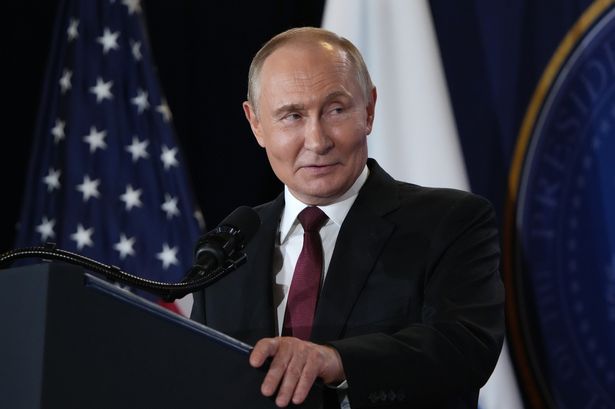Alexei Likhachev, the chief of Russia’s state atomic energy agency, has said the “colossal threats” Russia is facing means it must improve its nuclear capabilities in the coming years
The chief of Russia’s state atomic energy agency has claimed the Kremlin must improve its nuclear shield due to the “colossal threats” it is facing.
Rosatom director Alexei Likhachev told RIA, the Russian state news agency, that the “current geopolitical situation” is “a time of colossal threats to the existence of our country”. Arguing that Russia’s nuclear shield is “also a sword”, he said it “must only be improved in the coming years”, but did not detail how this could be achieved.
It comes as a number of Western militaries bolster their air defences and improve their own missile arsenals.
Russia already has the largest arsenal of nukes anywhere in the world, with an estimated 4,380 operational weapons. It has repeatedly been accused of sabre-rattling, particularly since the war in Ukraine was escalated by Vladimir Putin’s full-scale invasion in February 2022.
On the 1,000th day of the war Putin lowered the threshold for using nuclear weapons by signing a revised nuclear doctrine declaring that a conventional attack on Russia by any nation that is supported by a nuclear power will be considered a joint attack on his country.
Earlier this month, Russia said it “no longer has any limitations” over nuclear missile deployment and declared it no longer considers itself bound by a self-imposed moratorium on the positioning of nuclear-capable intermediate range missiles.
The Russian Foreign Ministry linked the decision to efforts by the West to develop intermediate range weapons and preparations for their deployment in Europe and other parts of the world. It specifically cited US plans to deploy Typhoon and Dark Eagle missiles in Germany starting next year.
Intermediate-range missiles can fly between 310 to 3,400 miles. Such land-based weapons were banned under the 1987 Intermediate-range Nuclear Forces (INF) Treaty. Trump withdrew from the pact in his first term, citing Russian violations, which Moscow denied. It, in turn, alleged the US had committed violations. The treaty was terminated in 2019, but the Kremlin declared its self-imposed moratorium on their deployment until the US makes such a move.
The collapse of the INF Treaty has stoked fears of a replay of a Cold War-era European missile crisis, when the US and the Soviet Union both deployed intermediate-range missiles on the continent in the 1980s.
Putin has previously announced that Moscow was planning to deploy its new Oreshnik missiles on the territory of its neighbour and ally Belarus later this year.
It comes as NATO allies attempt In May, US President Donald Trump announced ambitious plans to build a ‘Golden Dome’ missile defence shield over the United States.
“We want to build a ‘golden dome’ to protect our skies. We will build the F-47 fighter jet and develop the F-35 fighters,” Trump said speaking to US troops inside a hangar at Al Udeid Air Base in Qatar.
The proposed shield draws on Israel’s Iron Dome system, but Jeffrey Lewis, a missile defence expert at the Middlebury Institute of International Studies at Monterey, said such a plan could not be “scaled up without major technological and logistical changes”.



